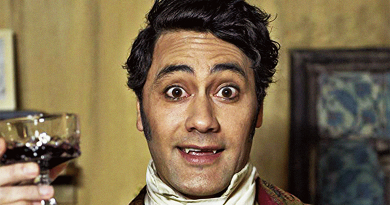The Play’s the Thing: Why Hollywood Needs to Stop Adapting Stage Plays
Several movies and TV shows this year, and every year, have been adapted from works intended for the stage. Some of these, such as “Ma Rainey’s Black Bottom” and “One Night in Miami“, have had mountains of praise dumped upon them and are in contention for numerous awards. Taking things even further, “Ma Rainey’s Black Bottom” is intended by producer Denzel Washington to be part of a series of adaptations of August Wilson’s entire Pittsburgh Cycle of plays, which included 2016’s “Fences“. Hollywood’s general addiction to adaptations and lack of creativity notwithstanding, this desire to continually adapt works of theater, from Shakespeare on down, into film is misguided and wasteful.
Adapting theater into film seems like a natural fit. Both involve scripts and actors and tell their stories through the interactions of performers with dialogue and action. One might even be led to believe that one could simply park a camera in front of a stage play and call it a movie. However, this view is deceptive. Theater and film are very different art forms in spite of their similarities. To compare the two is like comparing painting and sculpture. Both are visual art forms, certainly, but they are made in very different ways and are capable of producing very different effects. What makes a good sculpture does not make a good painting and vice-versa. The same principle goes for film and theater.
Interiority
Shakespeare’s great innovation in the world of theater was bringing interiority to the stage. The essential nature of watching a play is not unlike watching two people argue in a park. All the audience has to go on is what they say and what they do, which in reality isn’t very much. What about what they’re thinking? Shakespeare’s solution was to have his characters address the audience directly, and deliver dramatic and poetic speeches to the audience about how they are feeling and what they are thinking, laying bare the inner working of their minds. It is perfectly suited to the artifice of the stage, but in film, it feels bizarre and out of place.
What movies can do that theater cannot is put the audience inside the character’s mind. Instead of Hamlet telling us how he feels depressed, we can see into his mind with a dream sequence or hear his thoughts in voice-over. The director can use subtle angle changes, editing choices, and music to add layers of context and queue us into what his inner world is like at that moment. A soliloquy from Hamlet about his inner anger or fear might work brilliantly on the stage, but in the movies, a slightly shaky handheld camera might say all that more eloquently without a single word.
Dialogue
Words are perhaps the key factor differentiating theater from other performing arts. The stage is a limited space and actors are only human, so it is words that tell the story of a play. Before it is performed, a play is written and read. Theater is really just an extension of literature, a world constructed by and operating on words. Words, in the case of theater, means dialogue.
If you see a play live or on film, or read a play, it’s likely you will notice that there is a lot of talking but not much actually happens. We never see Rosencrantz and Guildenstern die, but people talk about how they died. That is theater in a nutshell. Talk, talk, talk, talk. I don’t know about you, but that would make for a lousy movie. Film is so much more than words. It has so much more at its disposal and is capable of so many varied experiences. Oftentimes, words merely bog a movie down, dragging it into a quagmire of boredom. In a world where we have “Stalker“, “Fast Five“, “The Cabinet of Dr. Caligari“, “Hot Fuzz“, and everything in between, why would anyone want to make a movie out of four people in a room yelling at each other for an hour and a half. And speaking of yelling…
Performance
Film and theater are united in that both rely on actors to bring their stories to life. However, the way in which this works could not be more different. Acting on the stage is big. The live nature of the performance and its unpredictability are part of its appeal, but another key factor is its size. In a large theater, an audience member might sit as far as 300 feet from the stage and an actor must tailor their speech and their movement to communicate all the way to the nosebleeds. If Hamlet is angry, everyone from the first row all the way to the last needs to be able to understand that. Stage actors will use massive body movements, exaggerated expressions, and project their voice or even just yell when speaking in order to make sure everyone in the room understands what is going on in the scene. This approach is exactly what a play demands, but film requires something very different.
Despite not sharing a room with the actors, film is often strangely more intimate. A close-up camera can pick up subtle facial queues like a look or smirk. Microphones can pick up and amplify whispered or mumbled dialogue. Slight changes in posture and body language are magnified. Actors must appropriately scale their performances when going between stage and screen. Every aspect of performance in movies is blown up to a massive scale, so actors must be small and subtle in their actions. It is common for performers, especially ones bringing works from the stage to the screen, to go way over the top and yell, scream, and cry their way through a scene when they really should dial things back. There’s a good reason that legends of the stage such as Laurence Olivier are viewed as such hams when it comes to the movies. Theater and film are not the same, and a good performance for one is a bad performance for the other.
Time
Many a theorist has asked, “What is film?”. It’s an interesting question. One might consider film to be an amalgam of other arts like photography, music, theater, and painting; one that is both greater than the sum of its parts yet paradoxically lesser than each one individually. However, this isn’t really true. If one defines an art form by what is unique to it, then film at its heart is editing, or more accurately, the manipulation of time.
The limitations of theater require that a scene play out in real-time. Film can do this but is not constricted in this way. A scene in a movie may stretch time via slow-motion, or compress it through jump-cutting. Multiple scenes, happening simultaneously or across stretches of time, may be cut together to create a new experience alien to all other art forms. It is the tools of editing, and the many ways in which they may be used, both established and undiscovered, that make cinema what it is, and to adapt works of theater often requires limiting them to their most basic and rudimentary uses. The full potential of editing in cinema is still untapped, and to limit it to remain faithful to another art form is a bit wasteful.
Freedom
Theater is limited in ways movies are not. Trying to make movies out of theater is a waste of time and a greater waste of opportunity. Despite all the freedom that cinema provides, the freedom to create anything and put it on screen, many who hold the purse strings in the film world are afraid of this freedom. Hollywood is addicted to IP, eschewing originality for adaptations, remakes, reboots, and sequels, using them as a crutch to enable their own laziness and make paint-by-numbers cinema. As lamentable as this is, it is enabled by the fact that movies are considered lowbrow art for the masses.
Interesting, groundbreaking and inventive art films exist, and new ones are released every year. However our culture privileges literature over the visual, and as such, novels and theater carry a great deal more cultural cache in the eyes of taste-makers than any film no matter how sophisticated. As such, when it comes to dishing out awards, notoriety, and prestige, films adapted from works of literature, like theater, are given precedence no matter how basic they may be in their form and content. This is to the neglect of many great art films that actually push the medium of cinema forward.
My hope is that filmmakers who are keen to embrace the freedom of cinema and create works of art that are interesting and new will continue to do so and that their efforts will be rewarded by the marketplace. It is very possible to adapt something intended for the stage to the screen while making the ending work something that showcases the power of the medium of cinema, rather than a shallow homage to the theater. I hope that future adaptations of stage plays take this path, instead of allowing themselves to be bound by the rules of another art form.




